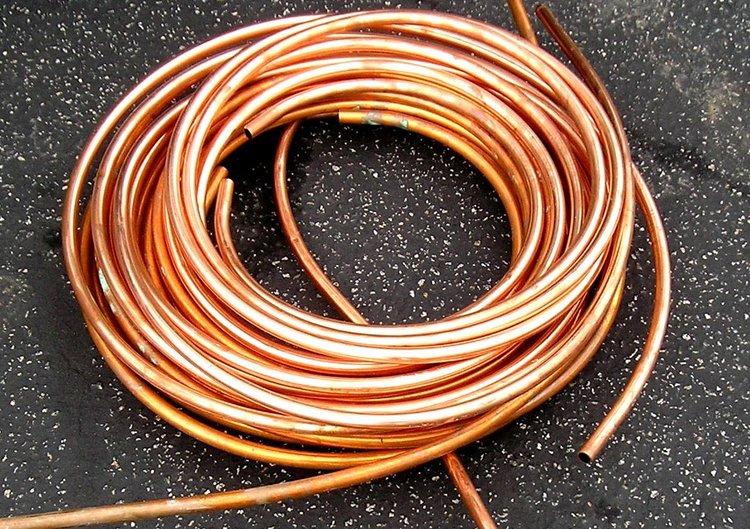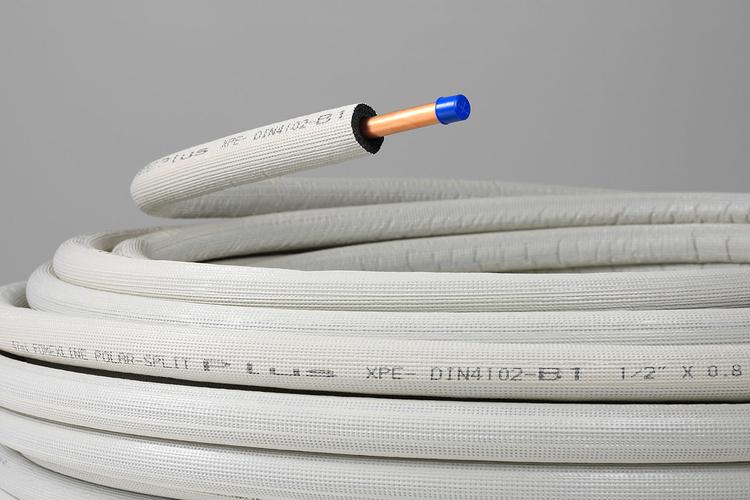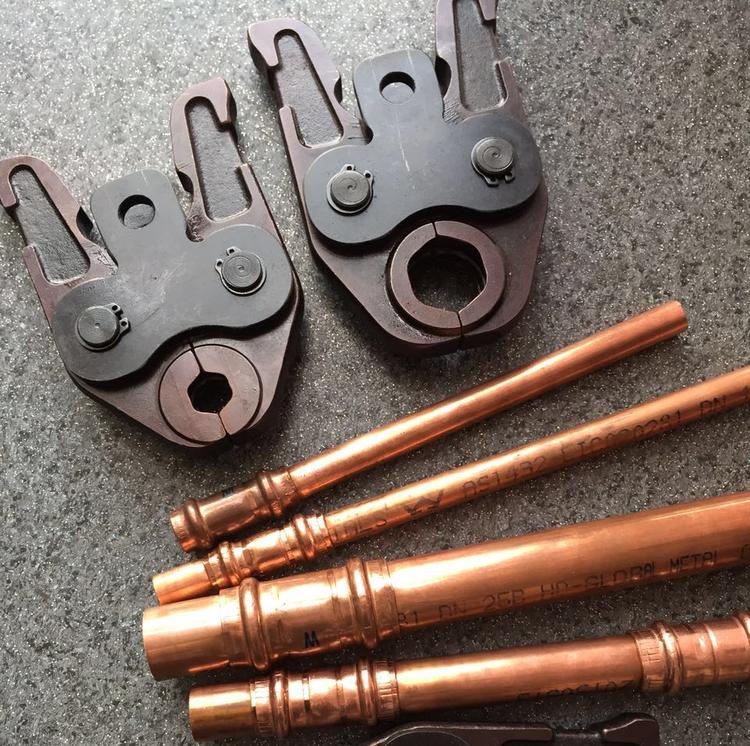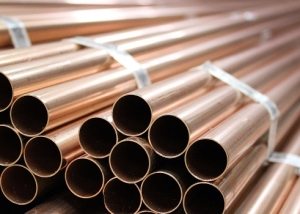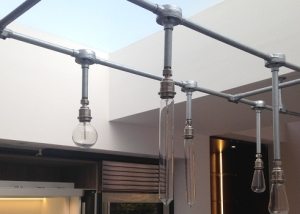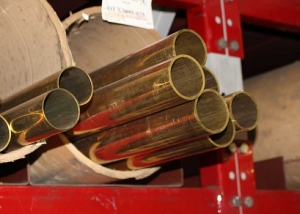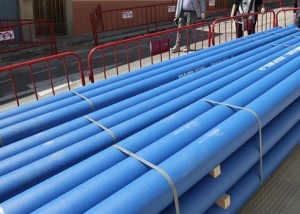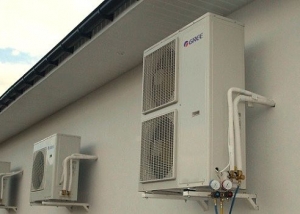Copper pipes are one of the most suitable solutions for air conditioning systems. Products are durable, resistant to corrosion, resistant to various external influences and are highly durable. The copper pipe has a small weight, and also withstands high pressure and various temperature conditions. The wide range of elements for the air conditioner allows you to choose their most suitable diameter.
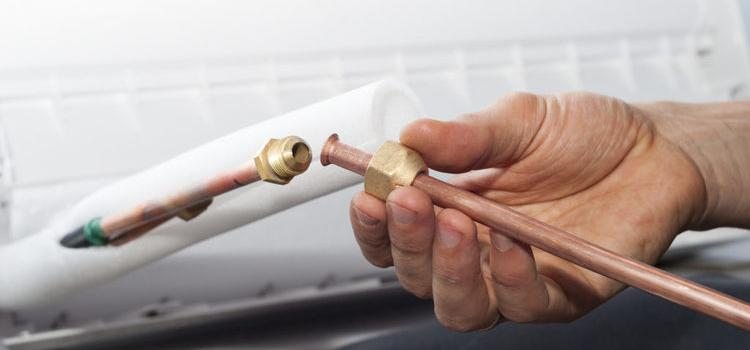
Safety and environmental friendliness of copper pipes determine their use in air conditioning systems
Content
The main varieties of copper pipes
The scope of use of copper products is quite extensive. They are used as a pipeline for supplying and transporting caustic liquids and gaseous substances. Since other types of materials are not able to compete with such a metal in this, it is the air-conditioned copper pipe that is the connecting link between the external unit and the indoor unit when transferring refrigerant. The substance passes through the stages of evaporation / condensation, in which the absorption / release of energy occurs.
Distinguish between annealed and unannealed elements. The first version of the pipe for the air conditioner is distinguished by higher technical characteristics. Annealed products are able to withstand significant pressure without deformation and have increased flexibility.
Note! Annealed Type Copper Pipe, which can be used for air conditioners, is produced with a meter of 15-50 meters, has a strength of 210-220 thousand kPa and an elongation of 50 to 60 percent.
Unannealed copper pipes for air conditioners are supplied with rods and have a strength of 280-300 thousand kPa, tensile elongation of 10 to 15 percent. The required diameter is selected based on the capacity of the device - the larger it is, the higher the level of refrigerant. When purchasing copper tubes for air conditioning systems, it is important to pay attention to the presence of plastic plugs at their ends. They prevent the occurrence of excessive humidity, litter, dust and pollution.
Diameter and dimensions of copper tubes for the air conditioner
The main indicators for the selection of the required products are the diameters of copper pipes for air conditioners. The rate of circulation of the refrigerant through the system depends on their value. In addition, a well-defined cross-section will significantly reduce pressure losses in units that cool the air.
Copper structures have a diameter of 0.6 to 26.7 centimeters. The standard provides 26 pipe sizes. In climate technology, elements of 19.05 are usually used; 6.35; 12.7; 9.52 and 15.88 millimeters, which corresponds to 3/4, ¼, ½, 3/8 and 5/8 inches. The standard minimum value of the product wall thickness for climatic equipment is 0.7 mm, however, in the general case, the parameter can vary from half a millimeter to 0.3 cm. The sale of copper products can be carried out in segments of 2 meters or in bays of 25, 15 or 50 meters.
The size and diameter of a suitable tube is determined by the design features of the climatic device, the nozzles and fittings of which need products of only certain dimensions and wall thicknesses.Often, air conditioning elements are designed for a cross section of 6-16 millimeters.
Features of elements in isolation
In some cases, copper tubes are placed in an additional insulating channel. A similar solution is used if it is necessary to completely eliminate the likelihood of freezing or overheating of liquid or gas moving along the highways.
Note! During the operation of HVAC equipment, abundant condensation occurs. The use of a copper pipe in insulation for air conditioners eliminates the risk of its accumulation in critically large volumes.
A protective sea otter is a black tubular product about 2 meters long, made of foamed rubber (non-porous) or special polyethylene. It protects the network well when temperatures vary from -150 ºС to +150 ºС. For comparison: copper thermal conductivity is 0.394 kW / (m * K), and insulation is 36 mW / (m * K).
An insulated pipeline allows to reduce the consumption of refrigerant and, as a result, electrical energy, since unprotected thin-walled copper can very much lose temperature.
Product Advantages and Installation
Copper elements used in air conditioning systems are characterized by such advantages:
- increased strength properties;
- resistance to corrosion;
- light weight, which facilitates the laying, transportation and installation of products;
- high flexibility and ductility of annealed tubes;
- very smooth inner surface;
- antibacterial properties;
- ability to withstand significant internal pressure, vibration loads and temperature fluctuations;
- resistance to ultraviolet;
- operational period - several tens of years;
- simple installation process.
In addition, such structures are easily processed without possible deformations with the preservation of the original cross-sectional indicators. During installation, tools for cutting metal elements are usually not used, since the chips that are formed during cutting can get into the cooling system and damage the equipment. For this reason, 2 main methods are applicable for fixing parts:
- soldering;
- fittings.
Since the solder has a low melting point, when connecting the copper elements, you can do with a simple gas burner. However, in order to eliminate the risk of refrigerant leakage in HVAC equipment, it is better to use a capillary high-temperature technique. Such soldering is more reliable.
Some global air conditioning manufacturers
Among the most common manufacturers of copper elements for climate systems are Majdanpek, Halcor, Wieland, Sevojno, FOMA (Italy), Frigotek (Austria), Hetcu and KME (Germany), CYPORI OY (Finland) and others.
Majdanpek specializes in the production of industrial and installation products made of deoxidized high phosphorous copper grade C12200 or Cu-DHP. Guaranteed Cu content> 99.9%; phosphorus - from 0.015 to 0.040 percent. The produced channels have an external diameter of 5 to 75 mm with a wall thickness of 0.35 to 2.5 millimeters in the solid, soft, and semi-solid states.
Halcor is one of the largest manufacturers of the products in question, including 8 factories and 18 companies. Product quality is certified by NSF, AFNOR, GOST, BSI, ZIK, NSAI, AENOR.
Note! The manufactured copper products are characterized by improved mold stability, low thermal expansion and chemical inertness against R407C, R134A, R410A, R404A refrigerants.
The Wieland Group is one of the leading manufacturers of special elements. For air conditioning tubes, there is a cuprofrio series. Products are manufactured according to EN 12735 and have a diameter of 6 to 104 mm.Such pipes are equipped with plugs at the ends, are easily prepared for on-site installation and have a very clean and dry inner surface.
Sevojno produces copper channels for gas and water according to EN 1057, for air conditioners and cooling systems - according to EN 12735. The copper content is more than 99.9 percent, phosphorus - 0.015-0.04%.
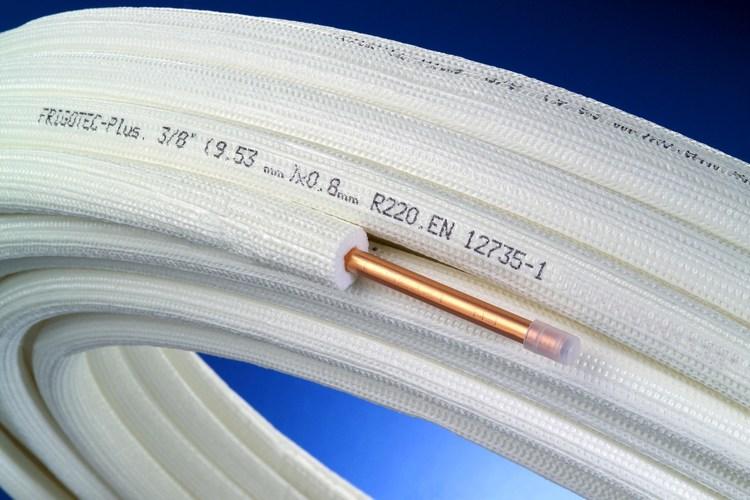
Leading manufacturers of copper pipes guarantee the quality and compliance of their products with accepted standards
The nuances of laying and welding elements
The technology for laying copper pipes in air conditioning systems can be conditionally divided into the following stages:
- marking the route indicating the location of the outdoor and indoor units;
- additional work (for example, shredding walls, if necessary);
- laying the track.
As a rule, a copper pipe is placed in a special box. The drainage channel for condensate drainage should be inclined. If the original products are not previously isolated, then they are insulated. There are gas and liquid lines. The first feeds the gaseous substance from the compressor to the condenser and from the evaporator to the compressor, the second feeds the liquid substance from the condenser to the evaporator. Both of these lines are pulled together with plastic clamps.
The external and internal block are installed after laying and reliable fixation of the track. At the next stage, pipes and blocks are connected into a single system with checking the tightness of the joints.
It is recommended that fitting connections be made in places with easy access in order to be able to check the grip strength of elements during operation. Soldering Dock It involves preliminary cleaning and degreasing of pipes, applying a liquid or paste flux, uniform heating of the joint with a torch, applying solder, cooling the joint in natural conditions and cleaning excess flux.
Copper tubes for air conditioners are convenient and simple not only to install, but also to operate. If necessary, the annealed products can be bent at all possible angles without fear of tearing and deformation.
